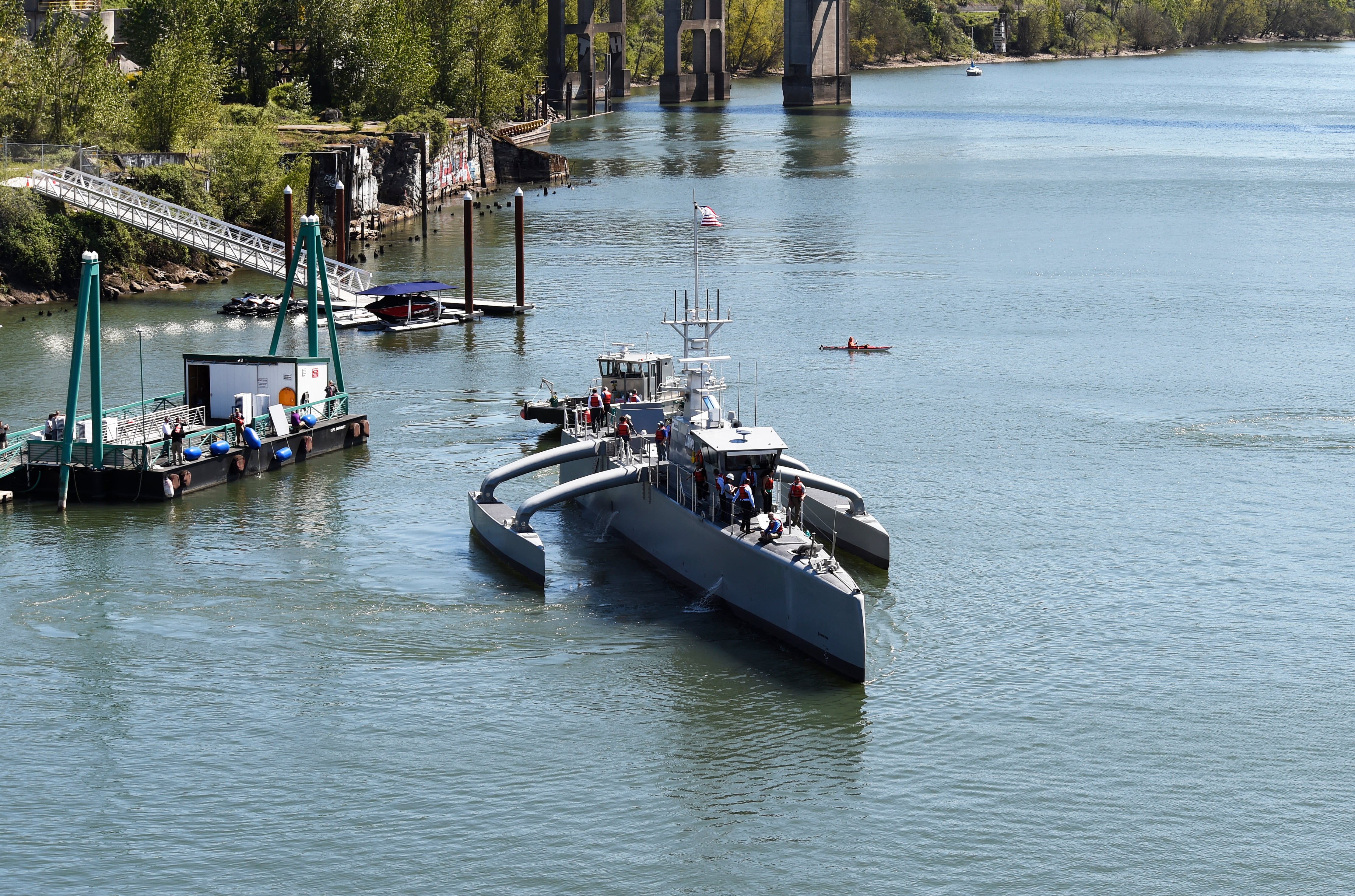There is an African proverb that asserts: If you want to go fast, go alone. But if you want to go far, go together.
NATO, which just celebrated its 70th anniversary last year, is the personification of this proverb. Together, the allies have gone very far indeed. The original 12 signatories of the Washington Treaty have since grown to 30. Along the way, they won the Cold War and prevented another world war for over 70 years.
Yet, past success does not guarantee future security, and critical challenges are on the horizon for the most powerful alliance on the planet, including a resurgent Russia and a rising China that are making huge investments in the race for digital dominance.
When the pace of innovation has become exponential, it’s no longer sufficient to just go far, together. The allies must go far, fast if they are to maintain a technological edge.
RELATED

The NATO Maritime Unmanned Systems Initiative is indeed innovating in an age of exponentials and delivering results at a pace rarely seen in the alliance’s history. Launched by defense ministers from 13 nations a little over a year ago, the MUS Initiative is facilitating a game-changing leap forward in maritime technology that will give allied sailors new capabilities enabled by secure, digital communications with military drones deployed above, on and below the water.
So what makes this initiative so effective? How is it going far, fast? Here’s what the NATO MUS Initiative is doing right:
- Design for speed. The MUS Initiative is a U.S.-led multinational cooperative effort launched by NATO’s Defence Investment Division to enhance critical maritime capabilities. It is not constrained by NATO’s consensus-based bureaucracy. It is a coalition of the willing with shared interests in delivering maritime unmanned systems capabilities quickly. No single nation can slow down the effort of the majority. All on the initiative share similar goals and a sense of urgency to deliver results quickly.
- Embrace new, better ideas. There is a clear recognition by the NATO MUS team that it must do things differently to take full advantage of the pace of innovation happening in the private sector and stay ahead of potential adversaries. The initiative has fully embraced and is giving life to the simple, yet effective advice for innovating in the age of exponentials, per the recommendation by Amir Husain, the CEO of SparkCognition and a co-author of this commentary.
- Take action. Action, even the smallest step forward, is of the utmost importance in driving this or any initiative forward. At its first meeting last year, the MUS Initiative’s Steering Board, which provides the strategic leadership for this effort, set its vision to deliver a maritime force teamed with interoperable maritime unmanned systems to securely deliver force-multiplying capability by allied and partner nations.
- Take risk. Typically, allied navies pursue exquisite capital assets such as warships, aircraft and submarines, which can take 10-20 years to design and build. And with an expected service life of 30-plus years, you won’t be surprised to learn just how averse to risk the procurement process has become. Maritime unmanned systems are different, and they’re developing so fast that it doesn’t make sense to pursue exquisite solutions. The 70 percent solution is good enough. When these systems fail, we learn from our mistakes and improve the next iteration. That’s when you know you are pushing forward with new capabilities.
- Work in diverse teams. By definition, NATO is a diversity of perspectives, with allies from 30 different nations bringing their unique culture and experiences to the table. This holds true for the MUS Initiative, which benefits from a diverse team of 14 nations and their innovation ecosystems.
- Get ideas from everywhere. In search of new ideas, the MUS Initiative has assembled an incredibly diverse and accomplished team of experts from outside the defense sector. On the MUS Innovation Advisory Board, there is a marketing executive for the No. 1 brand in the world, a banking executive turned award-winning theater writer and producer, a startup CEO, a design-thinking expert, and even the futurist and author Peter Singer, who has been advising this initiative since its launch.
- Create a culture of change. Any meaningful, institutional change must be accompanied by a cultural change that matches the challenge ahead of us. Why is it no one gets fired in government for going too slow? Or rewarded for going fast? American Gen. James Mattis once said: “Protect your mavericks — otherwise you washout innovation.” Andrea Bell-Miller, the U.S. lead for the initiative, is one such maverick, stating: “Now is the time to innovate to move forward. The good thing about the NATO MUS Initiative is that we are all of the same mindset — we either find a way ... or we make one.”
It is indeed possible to go far, fast. The NATO MUS Initiative is proof positive. But its gains, while significant, have yet to be scaled. The real question: Will this effort be the start of real, institutional change across the NATO enterprise? Or will the bureaucratic processes — many of which were designed during the Cold War — prevent this NATO “startup” from crossing the “valley of death” and truly leading an innovation in government that is so desperately needed to keep pace with those potential adversaries moving with purpose and pace in an age of exponentials?
Amir Husain is the founder and CEO of the artificial intelligence company SparkCognition. He is also the founding CEO of SkyGrid, a Boeing and SparkCognition joint venture. Michael D. Brasseur is the director of naval armaments cooperation for the U.S. Mission to NATO. He is also the first director of NATO’s Maritime Unmanned Systems Innovation and Coordination Cell.








